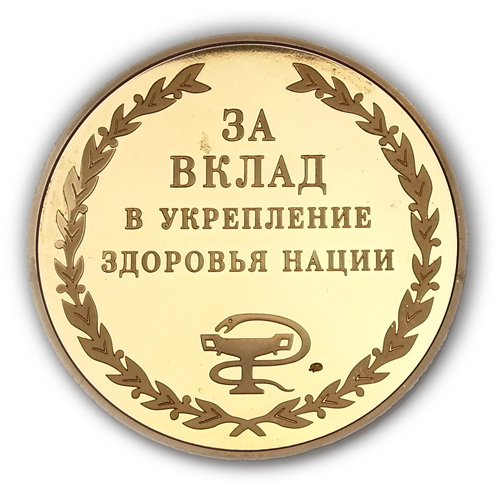
Силимарин ингибирует воспаление
Silibinin inhibits the production of pro-inflammatory cytokines through inhibition of NF-κB signaling pathway in HMC-1 human mast cells.
Inflamm Res. 2013; 62: 941–950. Published online Sep 18, 2013.
Beom-Rak Kim, Hye-Sook Seo, Jin-Mo Ku, Gyung-Jun Kim, Chan Yong Jeon, Jong Hyeong Park, Bo-Hyoung Jang, Sun-Ju Park, Yong-Cheol Shin, and Seong-Gyu Ko
Silibinin is the major active molecule of silymarin, the mixture of flavonolignans extracted from Cirsium japonicum. It has been used for the treatment of hepatitis and inflammation-related diseases.
In the present study, the effects of silibinin on allergic inflammation and its signaling were investigated in the induced human mast cells.
Methods
Cell growth inhibition induced by silibinin was measured by MTS assay. Histamine release was measured by enzyme immunoassay. The tumor necrosis factor-α (TNF-α), interleukin-6 (IL-6), and interleukin-8 (IL-8) secreted protein levels and mRNA levels were measured by the ELISA assay and RT-PCR, respectively. The NF-κB promoter activity was examined by a luciferase assay.
Results
Silibinin suppressed the growth of HMC-1 cells and also reduced the production and mRNA expression of pro-inflammatory cytokines such as TNF-α, IL-6, and IL-8. Moreover, silibinin inhibited the nuclear translocation of nuclear factor (NF)-κB through inhibition of the phosphorylation of IκBα and suppressed NF-κB transcriptional activity in stimulated HMC-1 cells.
Conclusions
Taken together, these results indicate that silibinin inhibits the production of pro-inflammatory cytokines through inhibition of NF-κB signaling pathway in HMC-1 human mast cells, suggesting that silibinin could be used for the treatment of mast cell-derived allergic inflammatory diseases.
Keywords:
Silibinin, Cirsium japonicum, Allergic inflammation, Human mast cells, NF-κB, Pro-inflammatory cytokine
Introduction
Inflammation is part of the complex biological response of vascular tissues to harmful stimuli, such as pathogens, damaged cells, or irritants [1]. This is related to cytokines and pro-inflammatory mediators secreted from macrophage. An allergic reaction is the result of an inappropriate immune response triggering inflammation [2].
A common example is hay fever, which is caused by a hypersensitive response by skin mast cells to allergens [3].
In allergic inflammation, humans produce immunoglobulin E (IgE) against allergen infiltration resulting in activation of mast cells which release histamine, tumor necrosis factor-α (TNF-α), interleukin-6 (IL-6), interleukin-8 (IL-8), and NF-κB [4].
Histamine is produced by basophils and by mast cells found in nearby connective tissues [5]. Histamine binds to H1 receptors in the target cells to contract gut and bronchus smooth muscle and to increase venuli permeability and rheum [6]. Histamine increases the permeability of the capillaries to white blood cells and some proteins to allow them to engage pathogens in the infected tissues [6].
TNF-α is secreted from the allergic mechanism of mast cells, macrophage, and T cells, causes the expression of adhesion factor to vascular endothelial cells, and accumulates white blood cells, resulting in inflammation response [7, 8].
IL-6 causes chronic inflammatory response, activating T cells and producing IgE [9]. Il-8 acts as a chemotactic factor for neutrophil, eosinophil, and T-lymphocyte, activating inflammatory response [10].
NF-κB functions as a transcription factor binding to the NF-κB response element located at the promoter of target genes regulating TNF-α, IL-6, and IL-8 [11, 12].
The secretion of histamine, TNF-α, IL-6, IL-8, and NF-κB is important in inflammatory response and their appropriate regulation could help in treating inflammatory disease.
Cirsium japonicum (CJ) is a wild perennial herb native to Korea, Japan, and China. It has been used as an anti-hemorrhagic, anti-hypertensive, and anti-hepatitis agent in traditional Chinese medicine [13, 14]. Recent studies have found that the water extracts of CJ induce the activation of estrogen receptors and have estrogenic effects [13, 15]. CJ also contains a vasorelaxant principle, mediating histamine H1-receptor activation [13, 16]. CJ has been prescribed in the treatment of tumors, such as liver cancer, uterine cancer, and leukemia [17, 18], and used as a hemostatic agent in herbal preparations to prevent epistaxis and metrorrhagia and to improve blood circulation [17]. Of note, silibinin, the major active molecule of silymarin, the mixture of flavonolignans extracted from CJ, is a very strong antioxidant compound capable of scavenging both free radicals and reactive oxygen species. Silibinin protects mice from T cell-dependent liver injury [19].
A recent report in rodents suggested that silibinin may be useful in the chemoprevention of malignancies in the skin, bladder, liver, cervix, and colon [20, 21]. Silibinin induced autophagic and apoptotic cell death in HT1080 cells through a reactive oxygen species pathway [22].
In the present study, we investigated whether CJ and silibinin has a therapeutic effect on allergic inflammatory disease. For that purpose, we measured the levels of histamine, TNF-α, IL-6, and IL-8 in human mast cells, HMC-1 activated by PMA plus A23187 under treatment with CJ and silibinin.
We found that silibinin decreased histamine release and reduced the production and mRNA expression of TNF-α, IL-6, and IL-8, while CJ did not show such effects.
We also found that silibinin blocked nuclear translocation of NF-κB inhibiting the phosphorylation of IκBα and suppressed NF-κB transcriptional activity in stimulated HMC-1 cells.
This suggests that silibinin inhibits the allergic inflammatory response through inhibition of the NF-κB signaling pathway in HMC-1 human mast cells.
текст можно скопировать и перевести в Google Translate

